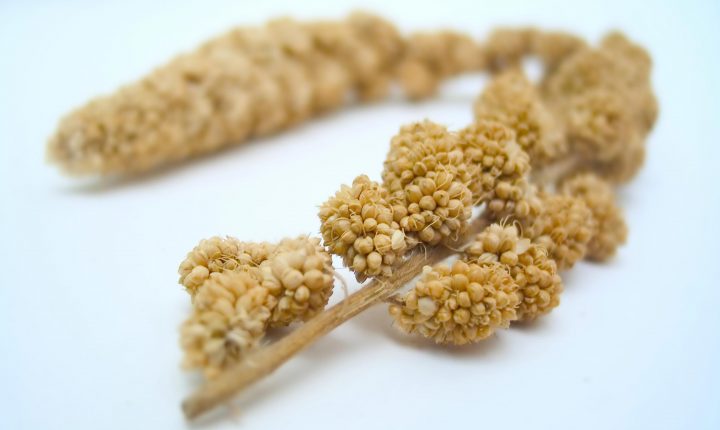
Millet is for the birds… and your pillow!
Millet hull pillows are a lesser-known alternative to buckwheat pillows like our own Hullo.
Many are immediately familiar with millet due to its unique smell. It is the primary component of most bird seed. Both millet and buckwheat are grown primarily for the nutritious grains they produce. Hulls are the byproduct of the milling process; they are left behind when the edible nutritious part of the buckwheat plant (groat) is extracted. The hulls, in both cases, happen to work very well as pillow fill.
I’m a big fan of buckwheat hull pillows, but I do have a millet hull pillow at home that I enjoy. Like my first buckwheat pillow, it took me awhile to get used to it.

Sustainable Practices in Millet Farming
First let’s acknowledge one of the best things about millet hull pillows: they’re undeniably eco-friendly. Like buckwheat, millet’s cultivation stands out for its low environmental impact—it grows with minimal water, thrives in poor soil, and doesn’t depend heavily on chemicals. While we don’t offer millet hull pillows ourselves, we think highlighting such practices encourages a more sustainable industry overall.
Millet Hulls: Sleep heavy… or light?
I bought some millet hulls online and carefully filled a 20×26″ case. When it appeared full, I was surprised by how much lighter it seemed than my buckwheat pillow. I tested my new pillow and found that when pressure was applied, the millet hulls slid away from the pressure point causing the pillow to “bottom out,” offering little support for my head and neck. I added more hulls to compensate. It took about 7 pounds to fill my standard-sized case to a desired thickness. For comparison, my buckwheat hull pillow has 8 pounds of fill. The additional volume required to sustain proper support for my head and neck negated my initial impression of the millet being substantially lighter.
Soft and Silky: How can that be a bad thing?
Being that I’m accustomed to sleeping on a buckwheat pillow it was a little strange at first. Millet hulls feel totally different. The most obvious difference is that the millet hulls really give, or collapse, when you put pressure on them. Your head will sink deep into the pillow. It feels soft compared to other similar pillows filled with microbeads or buckwheat hulls. The fill smoothly moves against itself adapting to any applied pressure. Thus, those resistant to the idea of a very firm pillow might adapt to a millet hull pillow more quickly than a buckwheat hull pillow.
Quiet! I’m sleeping on this pillow!
Millet hulls not only feel different than buckwheat they also sound different. Buckwheat hulls make a rustling sound when moved, but the millet hulls were nearly silent as they shifted around inside my pillow case. I’ve never been bothered by the sound of buckwheat hulls, but I have heard that complaint from a few buckwheat pillow users. Chalk silence up as a benefit of millet hulls.
Initially I was pretty excited that I’d found something superior to my buckwheat pillow. It seemed very promising. I spent a few weeks sleeping on it.
My millet hull pillow was lacking in a few ways.
Millet hulls can have a very strong odor.
I didn’t mind it too much, but my wife was really bothered by it. It reminded her of birds and well, bird shit (years ago we had a smelly pet parrot). For the benefit of sleep science, my wife persevered and allowed the experiment to continue. Fortunately after a couple weeks the millet smell faded almost completely.
To maintain proper support (my head kept sinking to the mattress), I had to keep readjusting or fluffing it up.
Unfortunately the millet hulls don’t grip together like buckwheat hulls do and thus the pillow doesn’t keep its shape very well. The divot containing my head slowly sunk to the mattress, causing my neck to bend downward at an unnatural angle.
I added more millet, thinking it’d offer better support. Although the loft (height) was now correct, it wasn’t as comfortable. Being so full, it no longer conformed to the shape of my head. The hulls would move away only so far as the fabric case would allow. The pillow became so firm that it felt like a bag of sand.

A breathable pillow will help you stay cool all night.
Millet hulls don’t allow air to circulate like a buckwheat pillow and thus, the millet is noticeably warmer.
A breathable pillow is a cool pillow. Unfortunately millet hulls are much smaller than buckwheat and thus don’t offer the same breathability. There’s much more space between the buckwheat hulls for air to circulate, which helps to keep it cool all night.
After a few weeks, I ended up going back to my trusty buckwheat pillow, but I didn’t abandon my millet hull pillow. It’s still in my bed. It’s great for reading-I put it on top of my buckwheat pillow for a soft squishy boost to my favorite sleeping pillow. I have always liked sleeping with a second pillow under my arm so my millet hull pillow has replaced a tired old down filled one by my side.
Millet Hull Pillow Advantages:
- Millet is lighter weight than buckwheat (although not by much).
- They feel soft and “smooth.”
- It’s quiet-the millet hulls don’t rustle when moved.
Millet Hull Pillow Disadvantages:
- The tiny millet hulls restrict airflow which makes it less effective than a buckwheat pillow at keeping your head and neck cool (Note that it’s still considerably more breathable than a down or polyester pillow).
- The strong smell of bird seed can turn some people off. The smell fades over time, but it can be quite strong when freshly harvested.
- Millet hulls offer little support for your head and neck. It “bottoms-out” easily if the enclosing case isn’t filled close to capacity.
A millet pillow’s lack of support is a deal-breaker for me; I can’t use it under my head for sleeping. Don’t get me wrong, it’s still a decent pillow. I’d definitely prefer it to a down or polyester filled pillow any day. The soft, silky feel really is appealing and I’m sure it would work well as a bed pillow for a lot of people.
Millet Hull Pillow vs. Buckwheat Pillow
For most people, I think that a buckwheat pillow is preferable. Give one a try and I think you’ll agree that it’s superior to other pillow types. Don’t take my word for it — check out these customer reviews.





